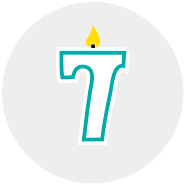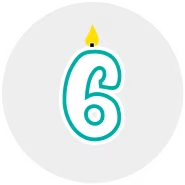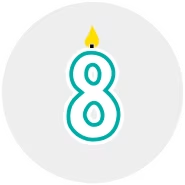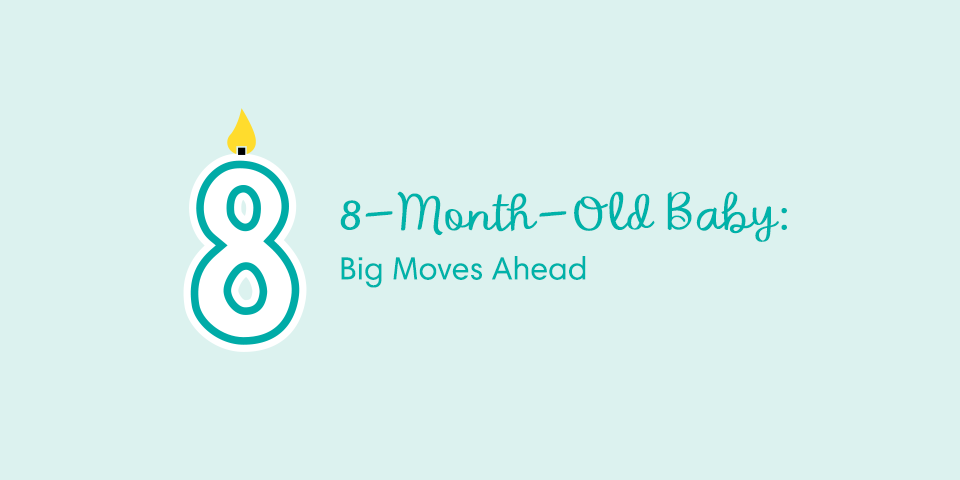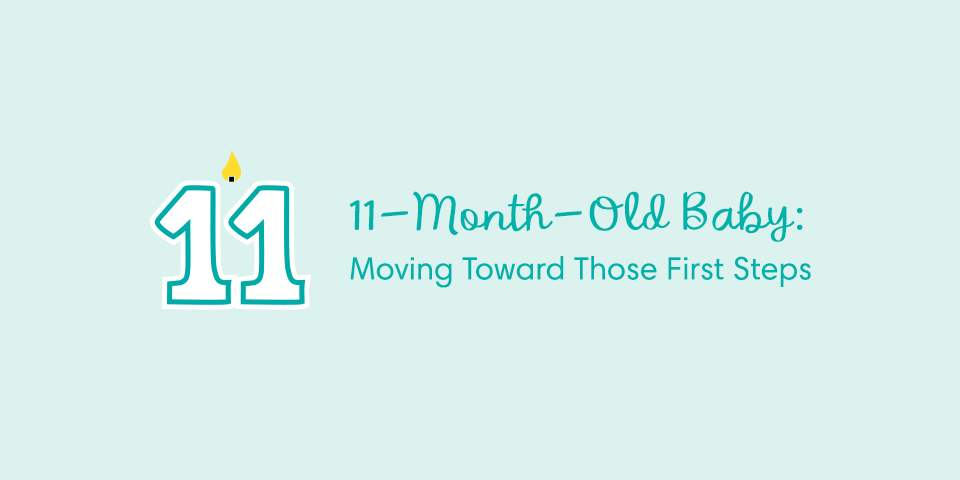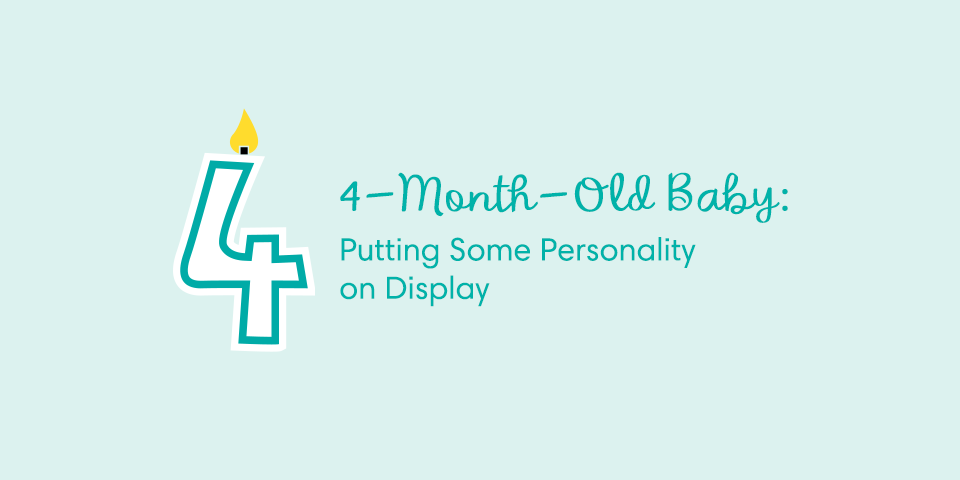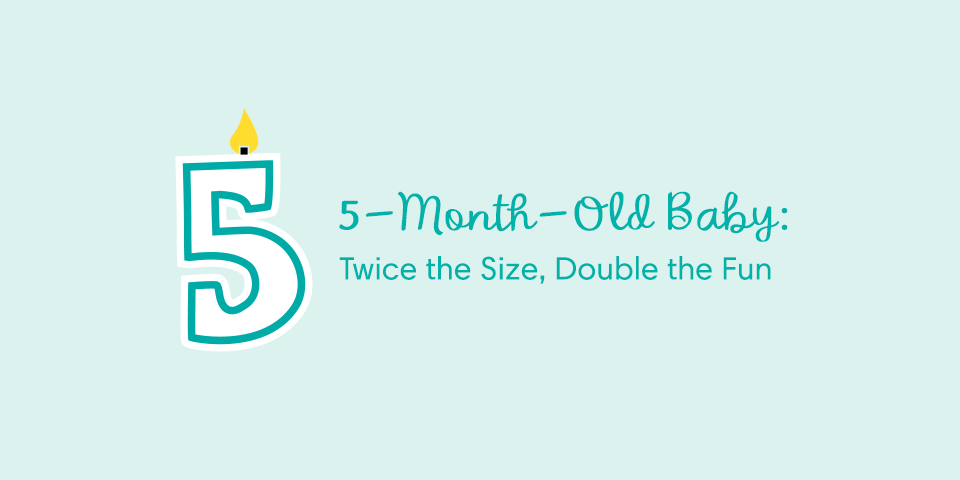Your 7-Month-Old Baby's Development and Milestones
By 7 months old, most babies are becoming more active, curious, and social. At this stage, developmental milestones can vary, but there are common signs of growth across motor skills, communication, and social interaction. Parents often notice stronger head and trunk control, the ability to sit without support, and more coordinated hand movements. Many 7-month-olds also begin to babble, respond to their name, and show interest in social games like peekaboo.
Here’s a quick overview of typical 7-month-old milestones:
While every baby develops at their own pace, noticing these signs can help you track progress and spot potential concerns early. Let’s take a deeper look at some potential development milestones of a 7-month-old infant.
Baby Development Milestones
There are many exciting milestones to keep an eye out for once your baby is 7 months old. And to celebrate your little one’s milestones each month, download our free Monthiversary Printables, which come in 4 adorable themes.
Here are some of the highlights from this month:
Physical Development: Average Weight and Height of a 7-Month-Old
At 7 months old, your baby is continuing to grow and change at an exciting pace. On average, babies this age gain about 1 to 1¼ pounds over the course of the month, and by now, many weigh around 2.5 times their birth weight. This steady weight gain is a normal and healthy part of development.
So, how much should a seven-month-old weigh? Every baby is different, but during your baby's 7-month checkup (or the next routine well-baby visit), the healthcare provider will measure your baby’s weight, length, and head circumference, then plot them on a baby growth chart. This helps ensure your child is growing steadily and remaining within a healthy range for their age.
You may also notice signs of a 7-month growth spurt around this time. These spurts can cause a temporary increase in fussiness, sleep changes, and extra hunger as your baby rapidly grows. Growth spurts usually last a few days and are a normal part of development. Continue to offer regular feedings and plenty of rest to help support your baby through these periods.
Wondering if your baby is on track?
Try our Baby Growth Chart Calculator below to see how your 7-month-old’s height and weight measurements compare to the averages. It's a quick, helpful way to visualize their growth percentile and progress over time!
Movement: Coordination, Independence, and Crawling at 7 Months
One of the most striking changes you could see this month is an improvement in your baby’s ability to coordinate their movements:
Cognitive Development: 7-Month-Old Speech, Vision, and Intellectual Milestones
At 7 months old, your baby is becoming more curious, interactive, and expressive. This is an exciting time for 7-month-old baby intellectual development, as they begin to show clear preferences, respond to familiar voices, and explore the world with growing understanding.
Behavioral Changes at 7 Months Old
As your baby grows, you may notice significant 7-month-old baby behavior changes. These shifts are a natural part of development and reflect your little one’s increasing awareness of the world and their growing desire to interact with it.
Fussiness at 7 months is common and temporary, often reflecting your baby's evolving communication and emotional needs. Comfort your baby with soothing words, gentle routines, and quiet time. Pay attention to triggers—sometimes a simple change in activity or setting can help them settle down.
Your little one is learning how to express preferences, assert independence, and navigate new experiences. With consistent support and reassurance, they’ll gradually learn to manage these big feelings.
Activities and Development Tips for Your 7-Month-Old Baby
Wondering what to do with a 7-month-old? At seven months old, your baby is eager to explore, learn, and connect with the world around them. The best way to support their development is through play, language, and safe interactions.
Here are some simple, effective ways to encourage your baby’s growth and development:
By incorporating these activities into your daily routine, you’re supporting your 7-month-old baby’s physical, cognitive, and emotional development, while building your bond along the way.
What “Should” Your 7-Month-Old Be Doing?
Your baby’s daily schedule may include sleeping, feeding, bathing, and playing. Here’s an example of what a day in your baby’s life might look like:
Keep reading to discover more about your baby’s feeding, diapering, and sleeping habits at 7 months old.
Feeding Your 7-Month-Old Baby
By 7 months, your baby is ready to explore the exciting world of food beyond breast milk or formula. Whether you’re offering purees, finger foods, or following baby-led weaning at 7 months, this stage is about encouraging exploration, not nutrition replacement. At this point, breast milk or formula is still your baby’s main source of nutrients, and solids are just a supplement.
So, what to feed a 7-month-old? And how much food should you feed your 7-month-old? Here’s a guide to help you build a healthy, responsive feeding routine:
Weaning a 7-Month-Old Baby
Introducing solids—also known as weaning—is a gradual process. Whether you're following a traditional or baby-led approach, focus on creating a positive mealtime experience.
Here’s what to know:
7-Month-Old Feeding Schedule and Chart
Our handy feeding chart below can give you an idea of how much and how often to feed your baby when they’re around 7 months old. You can even look ahead and see the recommendations for your little one when they’re between 9 to 12 months. And for more information, check out our dedicated guide on newborn and infant feeding schedules.
How Solid Foods May Change Your Baby’s Poop
Once your baby starts solids, you may notice changes in their bowel movements. It’s completely normal for poop to become:
This is a healthy sign that your baby is adjusting to new foods. However, if you notice very loose or watery stools, or blood in your baby’s stool, contact your baby’s healthcare provider—it could be a sign of sensitivity or a mild digestive upset.
As your baby grows, you’ll need to change diaper sizes, too. This diaper size and weight chart can help you find the right Pampers diaper for your baby. Plus, as you change all those diapers, it might help to know that you could actually be getting great rewards in return! (And we’re not just talking about a clean and happy baby!) Download the Pampers Rewards app!
How Much Should a 7-Month-Old Sleep?
By 7 months old, most babies need about 12 to 16 hours of sleep in a 24-hour period. This typically includes about 10 to 12 hours of nighttime sleep and 2 to 3 daytime naps, though individual needs and schedules can vary.
Wondering how often a 7-month-old should sleep? A typical pattern might look like:
If your baby has trouble falling asleep at night, you might consider shortening or dropping the third nap. Most sleep experts recommend adjusting daytime sleep to support a consistent bedtime routine.
Tips to Support Healthy Sleep at 7 Months:
Want personalized support? The Pampers Smart Sleep Coach app, developed by pediatricians and sleep experts, helps you track your baby's sleep patterns and navigate regressions, training, and schedule changes with confidence.
7 Month Sleep Regression
You might be wondering, “Is there a 7-month-old sleep regression?” The answer is—yes, for some babies.
Around this age, many babies experience 7-month-old regression signs, such as:
These changes are often due to developmental leaps, like learning to sit, crawl, or pull up. Separation anxiety may also begin around this time, which can affect your baby’s ability to settle down without you.
While sleep regressions are frustrating, they’re usually temporary. Stick to your routine, provide comfort as needed, and be patient as your baby adjusts to new skills and emotions.
Sleep Training Your 7-Month-Old
If your baby struggles to fall asleep independently, it may be time to begin sleep training your 7-month-old. At this stage, many babies are developmentally ready to learn how to self-soothe and sleep through the night.
Here’s a quick guide on how to sleep train a 7-month-old:
Need expert support tailored to your baby’s needs? The Pampers Smart Sleep Coach app offers guided sleep plans and step-by-step tools to help your baby (and you) get the rest you need.
Your Baby’s Health
At 7 months, it’s common for babies to catch colds or other minor illnesses as their immune systems continue to develop. Always check with your healthcare provider if you're concerned about symptoms.
Common Illnesses:
Fevers and Antibiotics
7-Month-Old Milestones Checklist
Here’s a quick reference checklist of common milestones many 7-month-olds may reach:
□ Sits without support □ Rolls over both ways □ May begin crawling or scooting □ Transfers toys from hand to hand □ Babbles with sounds like “ba” or “da” □ Responds to their name □ Recognizes familiar faces □ Shows interest in exploring objects □ Plays simple games like peekaboo □ May show signs of stranger anxiety.
To-Dos and Items You Will Need This Month
Life with a baby can be busy, so here’s a helpful checklist with some things to remember and items that might come in handy during this period:
FAQS AT A GLANCE
At 7 months old, breast milk or formula is still your baby’s main source of nutrition, even as you begin introducing solids. Your baby should still be getting around 24–32 oz (710–950 mL) of breast milk or formula daily. Most babies nurse every 3–4 hours or take about 4–8 oz per bottle, 4 to 6 times a day.
Cow’s milk is not recommended before age 1, as it doesn’t provide the right nutrients for infants. Stick with breast milk or formula until your baby turns one.
The Bottom Line
Your 7-month-old baby is growing fast and becoming more aware, mobile, and communicative. This month is all about exploration, whether that’s through scooting, babbling, trying new foods, or playing games with you. While each baby is different, celebrating their progress and supporting their unique pace is what matters most.
From sleep training and feeding to emotional development and playtime, you’re laying the foundation for a confident, curious, and happy little human. Keep encouraging your baby’s milestones—and don’t forget to take time to enjoy this special stage together.
For even more information, sign up to get our regular emails:
How We Wrote This Article The information in this article is based on the expert advice found in trusted medical and government sources, such as the American Academy of Pediatrics and the American College of Obstetricians and Gynecologists. You can find a full list of sources used for this article below. The content on this page should not replace professional medical advice. Always consult medical professionals for full diagnosis and treatment.
- American Academy of Pediatrics, Caring for Your Baby and Young Child: Birth to Age 5, 7th ed. (New York: Bantam Books, 2019).
- healthychildren.org. “Developmental Milestones: 7 Months.”
- healthychildren.org. “Emotional and Social Development: 4 to 7 Months.”
- healthychildren.org. “Starting Solid Foods.”
- Kids Health. “Feeding Your 4- to 7-Month-Old.”
- Kids Health. “Sleep and Your 4- to 7-Month-Old.”
- Kids Health. “Formula Feeding FAQs: Starting Solids and Milk.”
- Mayo Clinic. “Infant development: Milestones from 7 to 9 months.”
